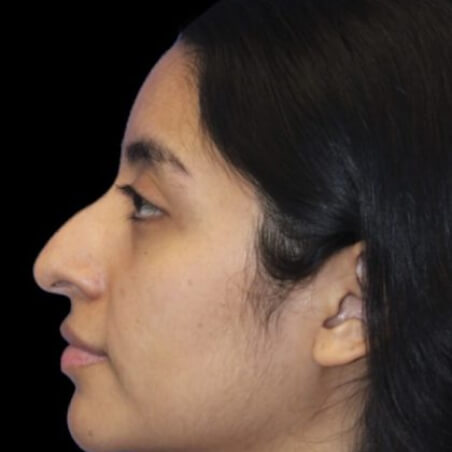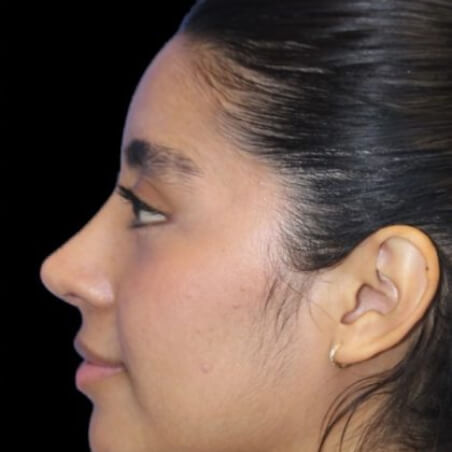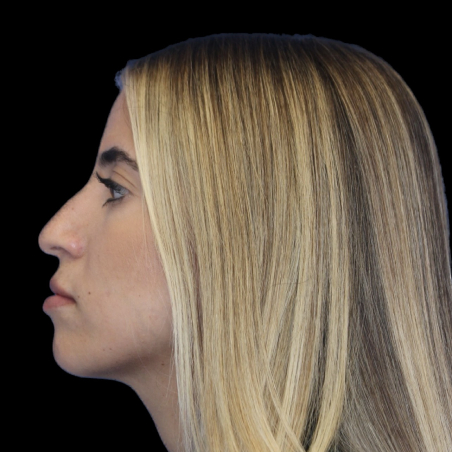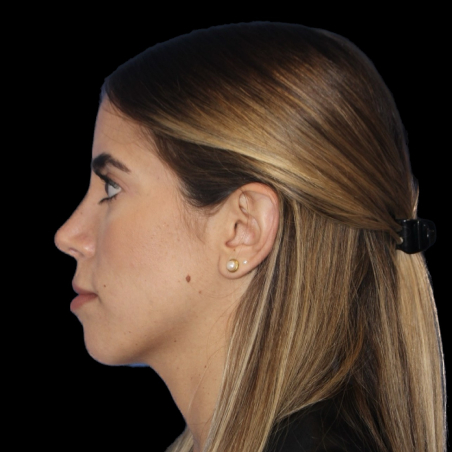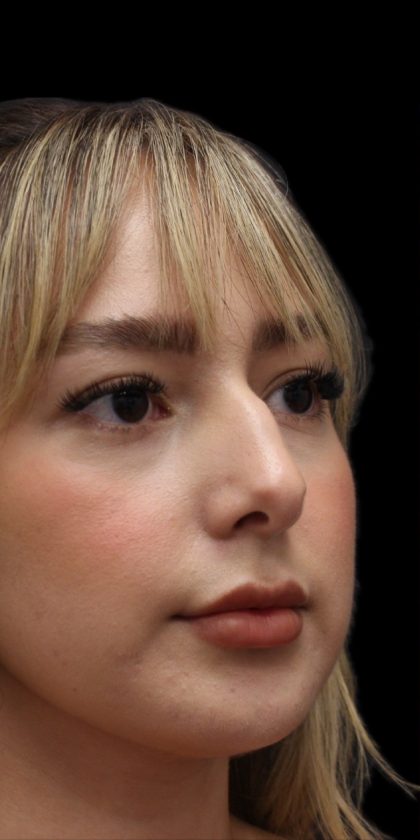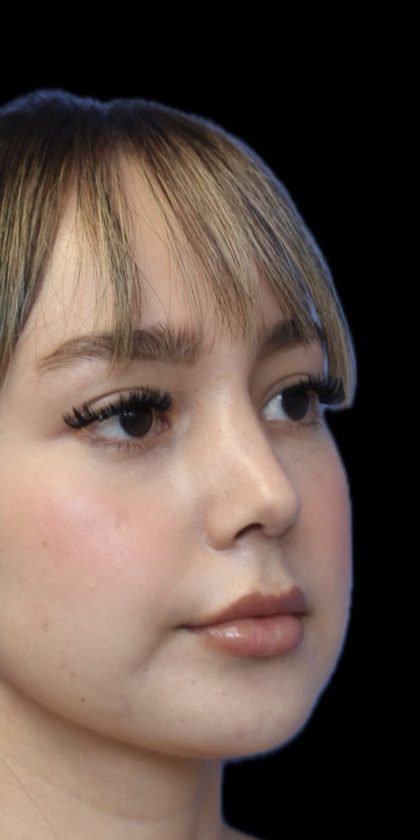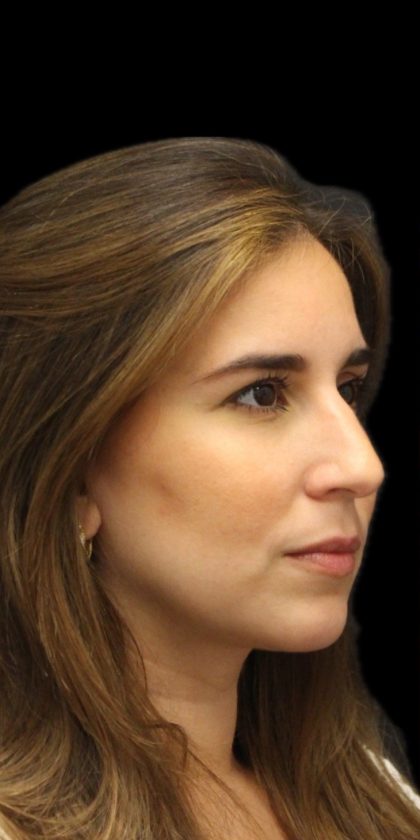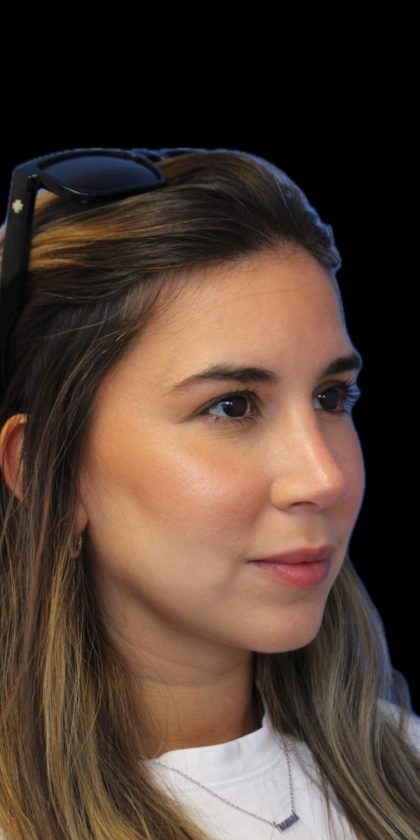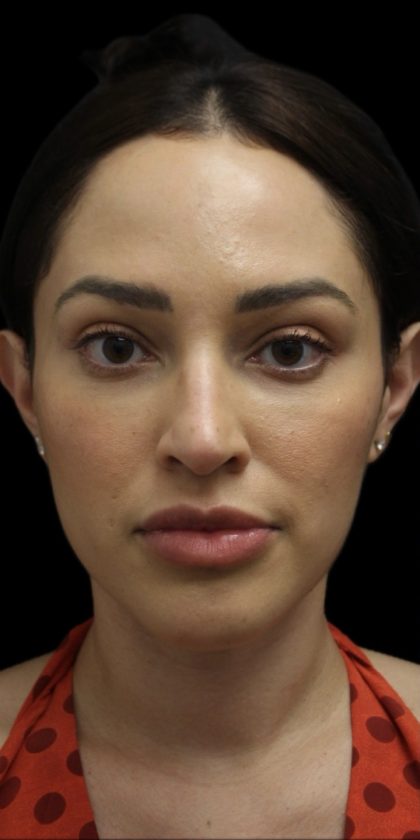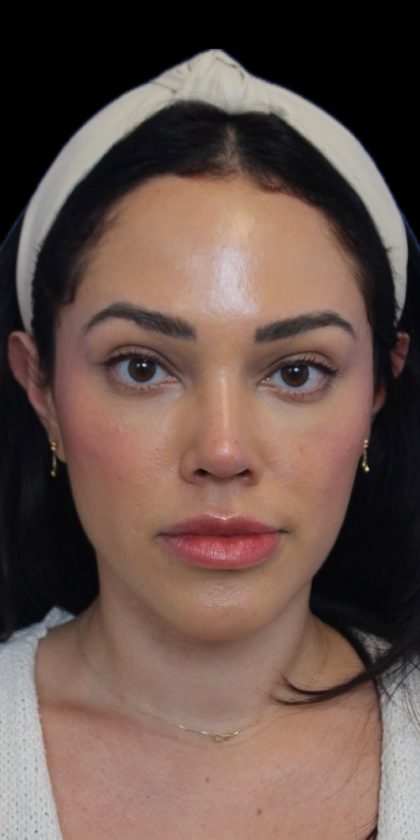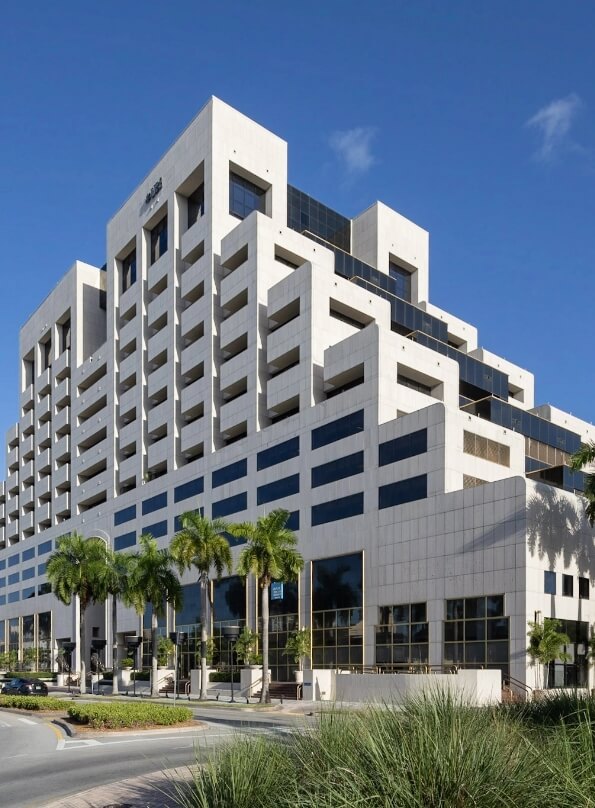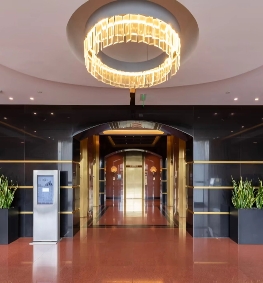Ultrasonic Rhinoplasty
Conveniently located to serve the areas of Miami, FL

An ultrasonic rhinoplasty is a nose-reshaping surgery that involves the use of highly advanced surgical instruments designed to minimize soft tissue damage. Instead of using chiseling tools, hammers, and rasps to modify nasal bones and cartilage, ultrasonic-emitting devices use sound wave vibrations to precisely alter highly specific treatment locations. These devices, also called piezoelectric inserts (PEIs) can correct a variety of aesthetic and functional issues, like dorsal humps, nasal asymmetry, nasal bone abnormalities, and problems with nasal width. With PEI technology, patients can protect thinner cartilage, mucosa, and skin, cutting down on recovery time and preventing the likelihood of radiating fracture lines caused by traditional rhinoplasty tools.
If you want to explore the benefits of rhinoplasty with the added benefit of these innovative techniques, get in contact with Plastic Surgery Institute Miami, a practice led by skilled plastic surgeons Dr. Marcelo Ghersi and Dr. Salomon Puyana. Our accomplished surgeons will listen intently to your cosmetic concerns and evaluate any nasal functional issues with great care and attentiveness. With their knowledge of ultrasonic tools, you can rest assured that they will work hard to promote incredible results that will instill a lifetime of confidence in your facial profile.
Call our Miami office today at (305) 446-7700 or fill out our contact form, and our staff will answer any questions you may have about our practice and your next steps for nasal recontouring with ultrasonic rhinoplasty.
Before and After Photos
Contents
About Rhinoplasty
The nose is such an intricate structure and an integral part of your face; surgeons take care to apply customized approaches to suit a wide range of needs. Surgeons can accurately correct soft tissue deformities, manipulate skin and internal mucous membranes, and alter bone and cartilage structures to create a patient’s vision of their ideal nose. The surgery only requires an incision along the columella, the bridge of tissue separating the entrance of each nasal opening. For certain alterations, surgeons can simply make internal incisions without ever creating an externally visible scar. The procedure can produce permanent results and resolve these issues:
- A too-small or too-large nose
- Nasal humps near the bridge of the nose
- Crookedness and asymmetries
- Wide, upturned, or downturned nasal tip
- Overly flared or constricted nostrils
- Overly pointed or overly rounded nose
The most skilled rhinoplasty surgeons are careful to preserve tissue functionality and take into consideration the patient’s ethnic background to create the most aesthetically pleasing outcome.
Functional Rhinoplasty
Some patients seek out rhinoplasty for medical reasons, usually to regain better airflow. To primarily treat functional problems, surgeons must carefully adjust nasal alignment and alter the positioning and placement of the septum- the dividing cartilage that separates each nostril. Oftentimes, these airflow problems are caused by a deviated septum in which the cartilage leans more to one nostril than the other, causing issues like a chronic stuffy nose, facial pain, headaches, a recurrent cough from post-nasal drip, and snoring. For relief from strictly breathing issues, many surgeons recommend septoplasty. Functional rhinoplasty may involve fixing one or more of the following anatomical issues:
- Deviated septum
- Nasal valve collapse- both internal and external
- Excessively large turbinates, bony structures inside the nasal cavity
- Tissue damage from an injury or an unsatisfactory primary rhinoplasty
If you want relief from these issues, septoplasty can help, but experienced surgeons like Dr. Ghersi and Dr. Puyana can combine aesthetic improvements within the same procedure. This particular method involves a combination of techniques to perform septorhinoplasty.
The Ultrasonic Rhinoplasty Difference
Ultrasonic rhinoplasty instruments were first used by Dr. Massimo Robiony in 2004, marking the innovative next step in the field of nasal surgery. Piezoelectric surgery can accomplish all of the results that standard rhinoplasty can while causing minimal damage to nasal structures.
Studies find that using ultrasonic technology reduces bleeding during the procedure and lessens swelling and bruising post-operatively. These tools provided especially effective results for a rhinoplasty technique called a nasal bone osteotomy. In these procedures, the surgeon must reposition the nasal bones in some way as a means to narrow or widen the dorsal base and bridge. Piezosurgery devices have a 3D navigational feature to make the osteotomy a much easier procedure to perform with greater accuracy and visualization. (1,2)
Personal Consultation
During your consultation with Dr. Ghersi or Dr. Puyana, you will have the opportunity to discuss the improvements you would like to achieve with an ultrasonic rhinoplasty. They will address all of your immediate concerns and questions so that you have a comprehensive understanding of what the procedure will entail. Most of all, they will explain their customized surgical approaches to specifically target your cosmetic and/or functional issues. During this appointment, you will be able to inquire more about how piezoelectric rhinoplasty will benefit you and the quality of your long-term results. If you feel confident and comfortable going forward with rhinoplasty, your surgeon will give you further instructions on how to prepare and the recovery process you should expect.
To get in touch with our practice today, call us at (305) 446-7700, fill out our online form, or visit our office in Miami, and we will help you book your first appointment with Dr. Ghersi or Dr. Puyana.
Ultrasonic Rhinoplasty Procedure Details
The details of the rhinoplasty vary on a case-by-case basis, but these procedures usually require general anesthesia and are performed on an outpatient basis. Your surgeon may use an open rhinoplasty technique in which they will make an incision along the separating tissue between the nostrils (columella) and lift the skin to gain full visualization of the internal nasal structures. For less complex rhinoplasties, your surgeon may only need to make internal incisions by accessing the same structures through the nostrils. What makes the ultrasonic rhinoplasty procedure unique is how your surgeon will apply each tool to accomplish various advanced nasal modifications.
Nasal Hump Reduction
To remove humps on the bridge of the nose, your surgeon may use a piezoelectric bone aspiration tool to emulsify and suction tiny amounts of bone tissue. This allows the surgeon to create smoothing results without inflicting mechanical or thermal injury to surrounding soft tissues. (3) This same piezoelectric instrument can also narrow widened nose bridges.
Lateral Osteotomy
A lateral osteotomy involves moving the nasal bones closer together to create a more narrow nose or to fix asymmetries. (2) For this technique, your surgeon can form a thin osteotomy line on either side of the nasal bone, removing any risk of creating an unwanted fracture line or damaging the inner mucosa. Then, they can create tiny openings so they can draw the nasal bones together, allowing them to heal in a more narrowed position.
“Let-Down” Rhinoplasty
This technique is designed for patients with a high nasal bridge and/or hump on the bridge, but it is also suitable for asymmetries. The “let-down” method involves taking an extremely small sliver of bone from the nasal bone, allowing it to heal in a more aesthetically flattering position.
Whether your surgeon decides that one of these techniques is optimal or a combination of traditional rhinoplasty/septoplasty approaches is a better choice, the goal of employing ultrasonic tools is to preserve vital nerves, blood vessels, and mucosa that need to stay intact for the best healing process possible.
Recovery and Results
After your ultrasonic rhinoplasty, you will still experience some amount of bruising, swelling, and tenderness, but these side effects should be less severe. If you have any alterations in the nasal bones, you will have some bruising under your eyes. Dr. Ghersi or Dr. Puyana will prescribe you the right medications to ease your recovery as much as possible. They will also provide you with further instructions on how to use a cold compress to mitigate discomfort and address swelling. You will have a post-surgical splint on your nose, so you will not be able to see the results right away. The key to healing well is to rest until your surgeon takes off the supportive splint at around the 5 to 10-day mark. After about 2 weeks into recovery, you should be able to return to work and your daily routine. However, you will have to postpone strenuous physical activities for another few weeks.
Your rhinoplasty results will settle in gradually because the healing process is so prolonged compared to many other types of facial surgery. Your surgeon may instruct you to tape your nose so that it heals in the correct placement. The final results will become more noticeable over the next few months and will depend on how well you follow post-operative instructions and your unique rate of healing.
Cost of Ultrasonic Rhinoplasty in Miami
The cost of your ultrasonic rhinoplasty will depend on the techniques your surgeon recommends to meet your expectations for nose reshaping, general anesthesia fees, post-operative medications, and follow-up appointments. Dr. Ghersi or Dr. Puyana will give you a comprehensive breakdown of the total costs involved during your first appointment at PSI Miami. At our practice, we want all of our patients to feel happy, satisfied, and confident with the incredible effects of ultrasonic rhinoplasty.
To find out more about this innovative, safer approach to nasal surgery, call our staff at (305) 446-7700 or inquire with our contact form today.
FAQ
What is Piezotome rhinoplasty?
Piezotome rhinoplasty, also known as ultrasonic rhinoplasty, is a cutting-edge surgical technique used to reshape and enhance the appearance of the nose. By utilizing ultrasonic energy, this procedure offers several advantages over traditional rhinoplasty methods, including improved precision, reduced trauma, and faster recovery times.
What type of anesthesia is used for ultrasonic rhinoplasty?
Piezotome rhinoplasty is typically performed under general anesthesia to ensure patient comfort throughout the procedure.
What are the risks associated with ultrasonic rhinoplasty?
Like any surgical procedure, ultrasonic rhinoplasty carries some inherent risks. These risks may include infection, bleeding, scarring, asymmetry, changes in sensation, or unsatisfactory outcomes. However, these risks are relatively rare when performed by an experienced and qualified plastic surgeon
How soon can I see the final results after ultrasonic rhinoplasty?
The final results of ultrasonic rhinoplasty gradually become evident as the residual swelling subsides over several months. The final outcome reflects the refined nasal aesthetics and enhanced facial harmony that the surgeon strives to achieve in each patient.
References
- Robiony M, Franz L, Costa F, Bianchi A, Marchetti C. Piezosurgery. Plastic and Reconstructive Surgery – Global Open. 2016;4(6):e788. doi:https://doi.org/10.1097/gox.0000000000000769
- Mowlavi A, Kim JB, Molinatti N, Saadat S, Sharifi-Amina S, Wilhelmi BJ. Understanding Why Lateral Osteotomy During Rhinoplasty Can Be Performed Safely. Eplasty. 2019;19:e9. Accessed April 26, 2024. https://www.ncbi.nlm.nih.gov/pmc/articles/PMC6448222/#:~:text=Background%3A%20Lateral%20osteotomy%20is%20a
- Pribitkin EA, Lavasani LS, Shindle C, Greywoode JD. Sonic rhinoplasty: sculpting the nasal dorsum with the ultrasonic bone aspirator. The Laryngoscope. 2010;120(8):1504-1507. doi:https://doi.org/10.1002/lary.20980
